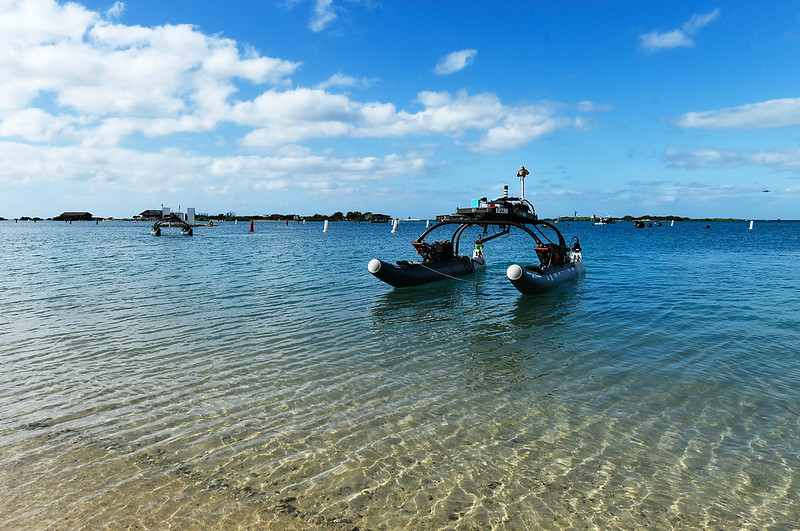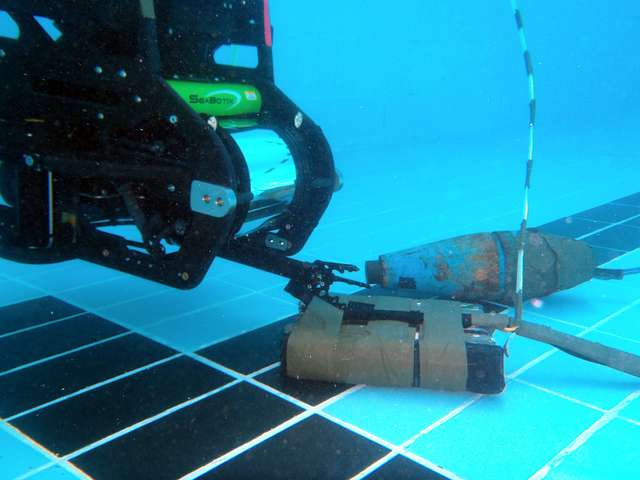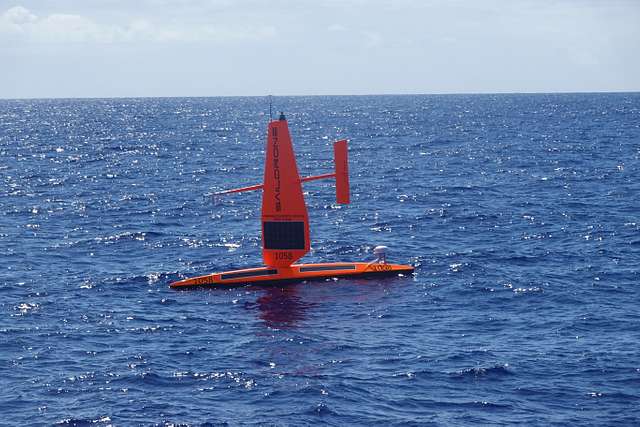Mucky riverbeds. The underside of wind turbines or offshore fish farms. Oil platforms. Reefs and shipwrecks in a harbour.
Those places are hard — and dangerous — to get to for humans in the first place, navigating be damned. This is where robotics has stepped in in the last few decades, going where no man could possibly go. With traditional ocean exploration methods being expensive, slow, and, more importantly, dangerous, subsea robotics has revolutionised the field, traveling to places and diving deeper further than we humans even thought possible.
With autonomous submersibles/underwater vehicles/surface vehicles (AUVs and ASVs) and remote-controlled vehicles (ROVs), we now possess the ability to map huge regions of the seabed, explore underwater systems, and uncover shipwrecks that were previously inaccessible. As the blue economy — economic activities related to the ocean — expands, it’s clear that underwater robotics has a huge role to play.

Breaking New Ground: Marine Research
A revolution is sweeping the field of marine research with the advent of underwater drones, allowing us to access the deepest parts of the ocean. These lightweight drones, which are equipped with high-tech cameras and sensors, can gather data for a long time, even months. With detailed measurements of chemical compositions, salinity, and water temperature, researchers have a better understanding of ocean currents and climate change effects on marine life.
Take the 5-ft-tall deep-sea diving humanoid OceanOneK, developed by Stanford University’s robotics lab. Equipped with stereoscopic vision and advanced haptic feedback systems, it has been exploring and recovering archaeological artifacts from sunken submarines, planes, and shipwrecks and studying out-of-reach coral reefs. There’s also the Wave Glider, a surfboard-sized unmanned ASV from Liquid Robotics designed for marine research, ocean monitoring, maritime surveillance, and data collection. Until now, these Wave Gliders have covered nearly 2.3 million miles of the ocean!

Marine Conservation and Resource Management
Marine resource management has made massive leaps and bounds with underwater robotics technology. While traditional monitoring methods were riddled with issues challenging limited environmental factors and human error, robots have been able to keep tabs on ecosystems round-the-clock, tracking changes in water quality, assessing fish populations, and even detecting illegal fishing activities.
Researchers at the Max Planck Society for Intelligent Systems designed a versatile jellyfish-inspired, energy-efficient, and nearly noise-free hand-sized robot for this very reason. Aptly called Jellyfish-Bot, the robot mimics the movements of a jellyfish swimming upward, circulating the water around it. Thus, it’s able to collect debris such as waste particles, and transport it to the surface and even collect fragile biological samples. The best bit? This gentle, nearly noise-free bot does so without negatively impacting the environment or aquatic species.

Another useful soft robotic fish is the Belle, the brainchild of ETH Zurich’s mechanical engineering department. This 3-ft-long ASV mimics the biomimicry of actual fishes, using AI to navigate and collect environmental DNA samples. Thanks to its incognito appearance, it can explore marine life and delicate ecosystems up close with minimal disruption, studying the biodiversity and health of reef ecosystems that have been impacted by climate change, pollution, and overfishing.
We also have the solar-powered, 32-ft-long AlgaRay, designed in the likeness of manta rays. It sinks seaweed to the seabed for decay, thus working to reduce carbon emissions.
Overall, these robots have also offered hope for a more sustainable marine future by providing real-time data on underwater habitats and fish stocks, allowing adjust marine operations to reduce bycatch and minimise overfishing.

Underwater Infrastructure: Building and Maintenance
Marine infrastructure has always been critical, whether it’s underwater tunnels, underwater pipelines, or offshore oil rigs. However, traditional methods of constructing and maintaining them have been highly dangerous, with human divers performing complex tasks under extremely challenging marine conditions. However, robotics technology has stepped up — and how.
AUVs and ROVs can now perform inspections and repairs at depths where humans couldn’t even survive, greatly reducing both safety risks and costs. In fact, they’ve also become indispensable for laying underwater cables — an essential part of global internet infrastructure today.
The 5-ft-long, unmanned, biomimetic, tuna fish-like BIOSwimmer underwater robot, developed by Boston Engineering, monitors submerged infrastructure and enhances port security. Thanks to its highly manoeuvrable design, it can enter turbulent waters and constricted spaces with ease, as well as can be customised for everything from harbour surveillance to tactical missions.
Or, take the snake-like Eelume, for instance, which was specifically for servicing subsea infrastructure. This modular AUV features a boatload of customisable features, including a self-propelled robotic arm that can literally snake through confined spaces, reaching underwater locations that were previously inaccessible. In fact, many “Eelumes” are designed to live permanently underwater, housed at docking stations.
There’s even the hybrid underwater AUV Aquanaut, an orange-hued, blimp-shaped submarine that can autonomously scan sea beds up to as much as 200 km in a single trip. It transitions into a humanoid ROV, much like a Hasbro transformer, extending two frontal robotic arms for maintenance-related jobs on subsea worksites and intervention tasks in the oil and gas industry.

Into The Blue
Whether it’s AI-powered ocean monitoring, ocean farming, marine search and rescue operations, maritime transportation and communication, or the future of ocean conservation, underwater robotics technology has become the keystone of the blue economy. As robots continue to explore the deepest, untouched parts of the ocean, they’re propelling us toward a future where the ocean maintains its ecological balance while being economically prosperous.








